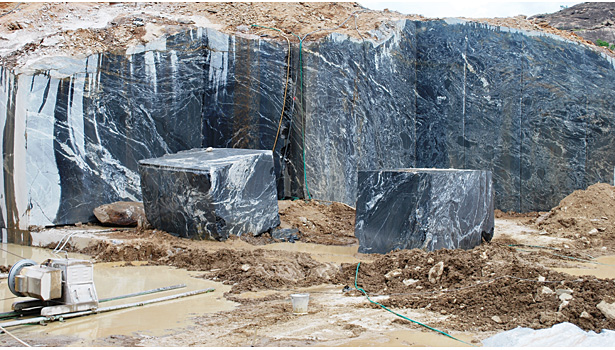Unearthing the Rich History and Lasting Practices of Granite Quarrying
As we stand on the precipice of discovering the detailed tapestry of granite quarrying, a journey with time discloses not simply the physical act of extracting rock but additionally the social and historic value woven right into the extremely fabric of this method. From the ancient origins that laid the foundation for modern-day quarrying techniques to the sustainable techniques that are forming the future of this market, each carve mark on granite surfaces informs a tale waiting to be uncovered (granite quarries in south africa). The heritage of granite quarrying extends much beyond plain removal; it is a testament to human resourcefulness, resilience, and the enduring appeal of this magnificent rock
Old Beginnings of Granite Quarrying
Going back to old people, the method of quarrying granite has actually been an important component of human history and building development. The earliest proof of granite quarrying days back to ancient Egypt, where substantial pyramids and complex sculptures were crafted from this long lasting rock. The Egyptians utilized primitive devices to draw out granite blocks from quarries, showcasing the significance of this material in their huge constructions.
Relocating forward in history, the Greeks likewise made significant payments to the quarrying of granite. The Greeks made use of granite in various building marvels, such as holy places and sculptures, demonstrating their skill in shaping and carving this durable rock. The Romans even more improved the techniques of quarrying granite, using innovative tools like chisels and hammers to extract and shape granite for their famous frameworks.
With the centuries, the technique of quarrying granite has developed, with modern innovations boosting effectiveness while preserving the timeless appeal of this natural rock - granite quarries in south africa. From old people to contemporary builders, the legacy of granite quarrying remains to shape our world
Evolution of Quarrying Techniques
The evolution of quarrying methods has actually been noted by a continuous development towards greater performance and accuracy in removing granite. Early quarrying strategies included hand-operated labor with fundamental tools such as chisels, hammers, and wedges to extract granite blocks from the planet.
Advancements in computer-controlled tools and 3D modeling have actually optimized quarrying procedures, leading to minimal ecological influence and improved sustainability techniques. As the need for granite proceeds to rise, the evolution of quarrying strategies remains integral to meeting market requires successfully and sustainably.
Cultural Importance of Granite
Granite holds an extensive social relevance across different people due to its enduring presence in architectural masterpieces and admired monuments. The cultural value of granite prolongs past its physical features; it symbolizes resilience, stability, and eternity, making it a symbol of withstanding legacies and customs.

Sustainable Practices in Quarrying
Among the rich history of granite quarrying and its social significance exists a growing focus on sustainable practices within the industry. As ecological understanding and worries about source depletion have actually enhanced around the world, the quarrying industry has actually increasingly welcomed lasting approaches to minimize its influence on the atmosphere and surrounding areas.

In addition, recovery and rehabilitation of quarry sites post-extraction are important to lasting methods. By bring back quarried locations to a natural or helpful state, such as creating wild animals environments or leisure rooms, quarriers can counter the environmental impact of their procedures and add positively to the local environment.
Tradition of Granite Quarrying
With a historic background steeped in workmanship and industrial progress, what sustaining influence has granite quarrying left on the landscape of modern society? The legacy of granite quarrying transcends mere removal methods; it has shaped architectural marvels, metropolitan landscapes, and social heritage worldwide. The resilient nature of granite has made it a preferred selection for monoliths, buildings, and facilities, standing as a testament to the skill and artistry of quarry workers across generations.
In addition, the financial footprint of granite quarrying can not be overlooked. The sector remains to provide employment possibility and drive regional economic climates in areas where granite removal prevails. It has actually also spurred technical improvements in Learn More Here quarrying strategies and devices, leading to a lot more reliable and lasting techniques.
In regards to sustainability, the tradition of granite quarrying includes initiatives to reduce ecological impacts with recovery jobs and accountable resource administration. By stabilizing economic rate of interests with environmental stewardship, the market makes every effort to make sure that future generations can continue to benefit from this long-lasting natural source.
Conclusion
